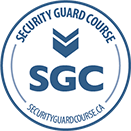In today’s fast-paced world conflict is inevitable. It’s present in our personal relationships, with our co-workers and even some of our brief public interactions. Our ability to navigate these conflicts effectively is a crucial skill for nurturing these relationships, while still achieving our goals. De-escalation is a series of strategies and techniques, often used by security and other law enforcement professionals to reduce the intensity of a conflict before it escalates into a potentially violent situation. But what does the term de-escalation really mean, and what makes someone effective at it?
The Essence of De-Escalation
Psychologists Owen Price and John Baker define de-escalation as the ability to balance opposing and seemingly contradictory variables, such as tolerance and control. This ability is sometimes referred to as “pliability”. This is because the intervenor possesses the ability to appear permissive yet in control, active yet inactive, and to be both prepared to act and to wait to act. This “pliability” enables the intervenor to move in-step with the subject, matching their behavior with effective responses to sensitively and intuitively guide the interaction toward the intervenor’s anticipated outcome. (Price & Baker, 2012).
In essence, de-escalation is about more than just calming people down. It is also about creating an environment that is conducive for resolution. It involves a dynamic interplay between the de-escalator and the subject or subjects, where the intervenor utilizes deliberate strategies dependent upon the behaviors of the others. Through the self-regulation of their own emotions, skilled de-escalators can steer these interactions toward a more positive and productive outcome.
Characteristics of Effective De-Escalators
Those who are effective de-escalators share several key traits:
Openness and Honesty: They are transparent in their intentions, focusing on genuine communication to build trust.
Self-Awareness: With a thorough understanding of their own emotions and triggers, they are able to remain calm and composed, even in the face of hostility and aggression.
Supportiveness and Non-Judgement: By refraining from passing judgment on others, they create a safe space for openness and dialogue.
Conflict without Arrogance: They use confidence to reassure others and show self-control, while also demonstrating humility so as not to appear overbearing.
Authentic Concern for Others: They express true empathy and concern for the other person’s well-being and point of view.
Non-Threatening Behavior: They monitor their own behavior to ensure that they do not appear aggressive or intimidating.
Permissive Appearance: Rather than taking an authoritarian approach, they adopt a more relaxed and approachable demeanor.
Together, these behaviors aim to establish trust and build rapport with the subject, making them more likely to remain calm and engage cooperatively. When people feel heard, understood, and validated, there is little need for aggressive behavior (Price & Baker, 2012).
The Psychology Behind Conflict
Conflict happens when there is the perception that an individual’s needs, values, or sense of identity is being threatened or undermined in some way. When we feel that our needs or values are being threatened, it triggers a range of responses from verbally defensive, to aggression, and even physical violence. The greater the need or value being threatened, the more intense the trigger will be and the more severe the response will be. This can challenge our ability to remain calm and rational.
The more we understand the psychological underpinnings of conflict, the better we can tailor our approach to the interaction. Understanding that an individual’s confrontational behavior might be driven by a perceived threat to a need, value, or aspect of their identity, allows the intervenor to uncover the underlying causes and work to address these concerns. By addressing the root causes of the conflict, this not only helps to diffuse the immediate tension, but can lead to more long-term solutions.
What triggers an individual is deeply personal, and can vary based on factors such as personality, past experiences, learned behaviors, the relationship between them and the specific context of the situation. It is very important for security professionals, as intervenors, to recognize that defensive, or aggressive behavior is often the subject’s response to a perceived threat. To manage such situations effectively, the security guard must not be seen as a threat to the subject. Ideally, the subject should view the security guard as either a neutral, or supportive party with the aim of resolving the issue.
The Role of Self-Regulation
While we cannot directly control how others behave, we can influence their behavior by modeling the behavior that we wish to see. This makes self-regulation a cornerstone of managing confrontational and aggressive behavior. Strategies for modeling behavior include:
Adopting a Non-Threatening Stance: Avoid aggressive or intimidating postures and gestures.
Exhibiting a Non-Judgemental Attitude: Focus on the problem and the situation, rather than on the subject and their personal attributes.
Showing Empathy: Encourage the subject to share their feelings and perspectives, focusing on understanding and validating them.
Active Listening: Pay close attention to the subject, asking open and closed-ended questions to uncover the underlying interests driving their behavior.
The ability to self-regulate emotions is critical to de-escalation because it allows the intervenor to maintain a calm and composed presence, which is necessary in a high-stress situation. This composure sets the tone for the entire interaction, encouraging others to mirror their calmness. This can create a ripple effect where everyone works hard to remain calm and composed, which makes them more open to rational and constructive dialogue.
Being able to self-regulate allows us to keep our focus on the best de-escalation strategies to guide the subject towards more reasonable and appropriate behaviors.
Techniques for Effective De-Escalation
De-escalation focuses on making the individual feel safe, validated and respected. It involves differentiating ourselves from the source of their frustration and, when necessary, setting clear boundaries and expectations. This can be achieved through the following techniques:
Use Calm and Measured Speech: Speak at a moderate pace, at a suitable volume, and with a tone that is calm and non-threatening.
Maintain Open Body Language: Maintain an open posture, with your arms and hands open and inviting. Avoid crossing your arms, pointing your finger, or other more confrontational gestures.
Validate their Feelings: Acknowledge the subject’s feelings and perspectives, without necessarily agreeing with them. Phrases like “I can see that this situation is very frustrating for you” can be very effective.
Avoid Laying Blame: Feeling judged often leads to feeling threatened, which then leads to defensive behaviors. Focus on the problem, rather than the person. If necessary, address specific behaviors, rather than personal traits. For example, rather than saying “You’re being irrational,” say, “Continuously raising your voice makes it hard for everyone to participate in the discussion.”
Set Clear Boundaries: If necessary, clarify what behaviors are acceptable and which are not. Explain the reasons, as well as the consequences of continued unacceptable behavior. If someone keeps interrupting when someone else is speaking, you might say “When you interrupt others, it makes them feel disrespected. This makes it hard to have an open discussion about this problem.” If they persist, say “We all agreed not to interrupt. If it continues, we may have to end this discussion before we can find a solution to the issue.”
Practical Application of De-Escalation
How might these de-escalation strategies be applied in a real situation? Consider a scenario where a heated argument breaks out between two colleagues. An affective de-escalator might manage the situation by:
Approaching Calmly: The intervenor approaches the individuals calmly, maintaining a relaxed posture and soft tone.
Acknowledging the Issue: They acknowledge that a conflict exists, without taking sides. “I can see that there is a strong disagreement here.”
Expressing Empathy: They allow each party the opportunity to share their perspectives and feelings. “It sounds like you both have important points to share.”
Reducing Tension: Using a calm tone and stance to model appropriate behavior, the intervenor focuses on diffusing the immediate tension between the parties. “ Let’s give each other a little more space, and take a few moments to breathe and collect our thoughts before we continue.”
Setting Boundaries: The intervenor sets clear expectations for the discussion going forward. “We need to discuss this issue without interrupting each other, or raising our voices, so that we can all focus on finding a solution.”
By employing the unique such as these, the de-escalator can reduce the intensity of the conflict, by treating the emotional component first, creating a more suitable environment for problem-solving.
The Importance of Training and Practice
Developing skill in de-escalation requires practice and continuous learning. Every interaction is different and will require a different approach. This requires intuition and the ability to move fluidly throughout the interaction. This requires a high level of competency, which can only be achieved through training and experience. Many training programs for security professionals, policing, mental health practitioners, and social services professionals include at least a few modules on effective de-escalation.
Our Conflict De-Escalation course is solely focused on providing you with the essential knowledge and skills to become an effective de-escalator. Through comprehensive training and realistic scenarios, you will learn how to assess and manage conflicts effectively and promote safer interactions, and more harmonious relationships in every aspect of your life.
Conclusion
For many professionals, including security guards, the ability to manage conflicts and de-escalate confrontational and aggressive behaviors is a crucial skill. By balancing tolerance and control, and demonstrating empathy and self-regulation, effective de-escalators can manage even the most challenging situations. The foundation of effective de-escalation lies in making the individual feel safe, secure, validated, and respected. Remember, conflict results from a perceived incompatibility between people’s needs, values, and sense of identity. If you can avoid being perceived as a threat, there is little need for the subject to behave defensively towards you.
If you found this information valuable and want to delve deeper into mastering these techniques, consider enrolling in our Conflict De-Escalation course. Equip yourself with the knowledge and tools to handle conflicts and confrontations with confidence and professionalism.
References:
Price O, Baker J. Key components of de-escalation techniques: a thematic synthesis. Int J Ment Health Nurs. 2012 Aug;21(4):310-9. doi: 10.1111/j.1447-0349.2011.00793.x. Epub 2012 Feb 16. PMID: 22340073.








